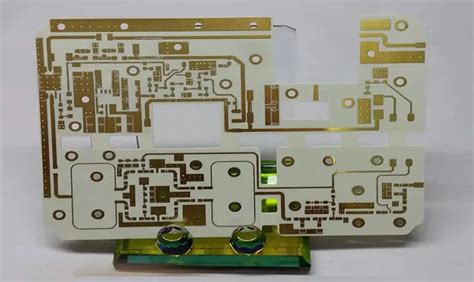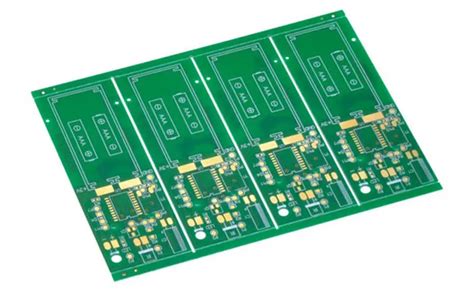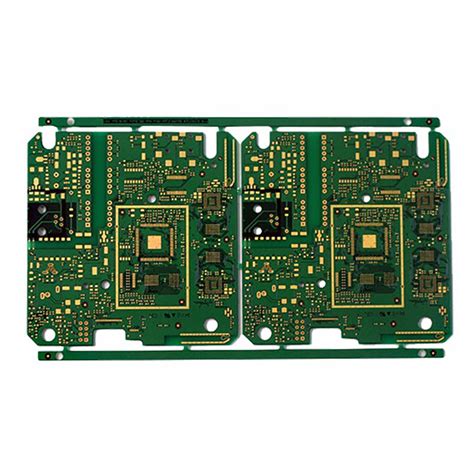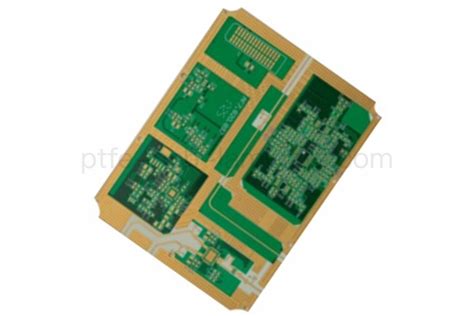Online pcb design
Advantages Of Using Online PCB Design Tools
The advent of online PCB design tools has revolutionized the way engineers and hobbyists approach the creation of printed circuit boards. These tools offer a myriad of advantages that streamline the design process, making it more accessible and efficient. One of the most significant benefits of using online PCB design tools is the convenience they provide. Unlike traditional software that requires installation and regular updates, online tools are accessible from any device with an internet connection. This flexibility allows designers to work from virtually anywhere, whether they are at home, in the office, or on the go, thus enhancing productivity and collaboration.
Moreover, online PCB design tools often come with user-friendly interfaces that cater to both beginners and experienced designers.
These platforms typically offer intuitive drag-and-drop features, extensive libraries of components, and real-time design rule checks, which help in minimizing errors during the design phase. As a result, users can focus more on creativity and innovation rather than getting bogged down by technical complexities. Additionally, the learning curve is significantly reduced, enabling new users to quickly adapt and start designing without the need for extensive training.
Another advantage of online PCB design tools is their cost-effectiveness.
Many of these platforms offer free versions or affordable subscription models, making them accessible to a wide range of users, from students to professional engineers. This affordability eliminates the need for expensive software licenses and reduces the financial barrier to entry for individuals and small businesses. Furthermore, the pay-as-you-go model allows users to scale their usage according to their needs, ensuring that they only pay for the features they require.
In addition to cost savings, online PCB design tools facilitate seamless collaboration among team members.
These platforms often include features that allow multiple users to work on the same project simultaneously, regardless of their geographical location. This collaborative environment fosters teamwork and accelerates the design process, as team members can easily share ideas, provide feedback, and make real-time adjustments to the design. Consequently, this leads to faster project completion times and improved overall efficiency.
Furthermore, online PCB design tools are continuously updated with the latest features and improvements, ensuring that users always have access to cutting-edge technology.
This is in stark contrast to traditional software, which may require manual updates or new purchases to access the latest advancements. By leveraging cloud-based technology, online tools can seamlessly integrate new functionalities and enhancements, providing users with a competitive edge in the rapidly evolving field of electronics design.
Lastly, the integration of online PCB design tools with other cloud-based services offers additional benefits.
For instance, many platforms allow for easy export of designs to manufacturing services, streamlining the transition from design to production. This integration reduces the risk of errors during the manufacturing process and ensures that the final product aligns with the original design specifications. Additionally, the ability to store designs in the cloud provides a secure and centralized location for all project files, safeguarding them against data loss and facilitating easy access for future reference.
In conclusion, the advantages of using online PCB design tools are manifold, ranging from convenience and cost-effectiveness to enhanced collaboration and access to the latest technology. These tools have democratized the field of PCB design, making it more accessible to a diverse audience and enabling users to bring their innovative ideas to life with greater ease and efficiency. As technology continues to advance, it is likely that online PCB design tools will play an increasingly integral role in the electronics design landscape.

Step-By-Step Guide To Creating A PCB Design Online
Designing a printed circuit board (PCB) online has become an increasingly accessible and efficient process, thanks to the proliferation of user-friendly software and platforms. This step-by-step guide aims to provide a comprehensive overview of how to create a PCB design online, ensuring that even those new to the field can navigate the process with confidence.
To begin with, selecting the right online PCB design software is crucial.
Numerous platforms offer varying features, so it is essential to choose one that aligns with your specific needs and level of expertise. Popular options include EasyEDA, KiCad, and Altium Designer, each offering unique tools and capabilities. Once you have selected a platform, the next step involves setting up your project. This typically requires creating a new project file and defining the basic parameters, such as board size and layer count, which will serve as the foundation for your design.
Following the project setup, the next phase involves schematic capture.
This is where you will create a visual representation of your circuit using symbols to represent components and lines to denote electrical connections. Most online PCB design tools provide extensive libraries of components, making it easier to drag and drop the necessary elements into your schematic. It is important to ensure that all connections are accurately represented, as this will directly impact the functionality of your final PCB.
Once the schematic is complete, the design process transitions to the layout stage.
This involves translating the schematic into a physical layout on the PCB. During this phase, components are placed on the board, and traces are routed to establish electrical connections. It is crucial to consider factors such as signal integrity, thermal management, and manufacturability while arranging components and routing traces. Many online tools offer automated routing features, which can significantly expedite this process, although manual adjustments may still be necessary to optimize the design.
After completing the layout, it is essential to perform a design rule check (DRC).
This automated process verifies that your design adheres to the specified rules and constraints, such as minimum trace width and spacing. Addressing any errors or warnings identified during the DRC is vital to ensure the reliability and manufacturability of your PCB. Additionally, conducting a thorough review of the design, including a visual inspection and cross-referencing with the schematic, can help identify any potential issues that may have been overlooked.
With the design finalized, the next step is to generate the necessary files for manufacturing.
This typically involves exporting Gerber files, which are the standard format used by PCB manufacturers. These files contain all the information required to fabricate the board, including the copper layers, solder mask, and silkscreen. It is also advisable to generate a bill of materials (BOM) and an assembly drawing to facilitate the assembly process.
Finally, once the files are prepared, you can proceed to order your PCB from a manufacturer.
Many online platforms offer integrated services that allow you to upload your design files directly and receive a quote for production. It is important to review the manufacturer’s capabilities and lead times to ensure they align with your project requirements.
In conclusion, designing a PCB online involves a series of methodical steps, from selecting the appropriate software to finalizing the design for manufacturing. By following this guide, you can navigate the process with greater ease and confidence, ultimately bringing your electronic projects to life with precision and efficiency.
Comparing Popular Online PCB Design Platforms
In the rapidly evolving field of electronics, the design and development of printed circuit boards (PCBs) have become increasingly accessible through online platforms. These platforms offer a range of tools and features that cater to both novice hobbyists and seasoned professionals. As the demand for efficient and user-friendly PCB design solutions grows, several online platforms have emerged, each with its unique strengths and capabilities. This article aims to compare some of the most popular online PCB design platforms, highlighting their features, advantages, and potential limitations.
To begin with, EasyEDA is a widely recognized platform that has gained popularity due to its comprehensive suite of tools and user-friendly interface.
It offers a seamless integration of schematic capture, PCB layout, and library management, making it an attractive choice for users seeking an all-in-one solution. EasyEDA’s cloud-based nature allows for easy collaboration among team members, facilitating real-time sharing and editing of projects. Moreover, its extensive component library and support for importing files from other design software enhance its versatility. However, while EasyEDA is robust, some users may find its advanced features less intuitive, requiring a learning curve to fully exploit its potential.
In contrast, KiCad is an open-source platform that has garnered a strong following among professionals and hobbyists alike.
Known for its flexibility and powerful features, KiCad provides a high degree of customization, allowing users to tailor the software to their specific needs. Its ability to handle complex designs and support for 3D visualization of PCBs are notable advantages. Furthermore, being open-source, KiCad benefits from a vibrant community that contributes to its continuous improvement and expansion. Despite these strengths, KiCad’s complexity may pose a challenge for beginners, who might find its interface less intuitive compared to other platforms.
Another noteworthy platform is Altium 365, which extends the capabilities of the well-established Altium Designer into the cloud.
Altium 365 offers a collaborative environment that enables teams to work together seamlessly, regardless of their geographical location. Its integration with Altium Designer ensures a smooth transition for users familiar with the desktop version, while also providing advanced features such as version control and design review tools. However, the cost associated with Altium 365 may be a consideration for smaller teams or individual users, as it is generally positioned towards professional and enterprise-level applications.
On the other hand, Autodesk’s Eagle is a platform that strikes a balance between ease of use and advanced functionality.
Eagle’s intuitive interface and extensive library of components make it accessible to beginners, while its powerful design tools cater to more experienced users. The platform’s integration with other Autodesk products, such as Fusion 360, offers additional benefits for those involved in mechanical design and prototyping. Nevertheless, some users may find Eagle’s subscription model less appealing, particularly if they prefer a one-time purchase option.
In conclusion, the choice of an online PCB design platform largely depends on the specific needs and preferences of the user.
EasyEDA, KiCad, Altium 365, and Eagle each offer distinct advantages, ranging from user-friendliness and collaboration features to advanced design capabilities and customization options. By carefully considering these factors, users can select a platform that best aligns with their project requirements and skill level, ultimately enhancing their PCB design experience. As technology continues to advance, these platforms are likely to evolve, offering even more innovative solutions to meet the diverse needs of the electronics design community.
Tips For Optimizing Your Online PCB Design Process
In the rapidly evolving field of electronics, the design and development of printed circuit boards (PCBs) have become increasingly reliant on online tools. These platforms offer a range of features that streamline the design process, making it more efficient and accessible. However, to fully leverage these tools, it is essential to optimize your online PCB design process. By implementing a few strategic practices, you can enhance the quality and efficiency of your designs.
To begin with, it is crucial to have a clear understanding of your project requirements before diving into the design process.
This involves defining the specifications, such as the size, shape, and functionality of the PCB. By establishing these parameters early on, you can avoid unnecessary revisions and ensure that the design aligns with the intended application. Additionally, having a well-documented plan can serve as a valuable reference throughout the design process, helping to maintain focus and direction.
Once the project requirements are established, selecting the right online PCB design tool is a critical step.
With numerous options available, it is important to choose a platform that offers the features and capabilities that best suit your needs. Consider factors such as ease of use, available libraries, and compatibility with other software. Furthermore, many online tools offer community support and tutorials, which can be invaluable resources for both novice and experienced designers.
As you begin the design process, it is advisable to start with a schematic capture.
This step involves creating a detailed diagram that represents the electrical connections and components of the PCB. By carefully organizing and labeling each element, you can ensure clarity and accuracy in the subsequent stages of design. Moreover, schematic capture allows for easy identification of potential issues, such as incorrect connections or component placement, which can be addressed before moving on to the layout phase.
Transitioning from schematic capture to layout design, it is essential to pay attention to component placement and routing.
Proper placement of components can significantly impact the performance and manufacturability of the PCB. Aim to minimize trace lengths and avoid crossing signal paths, as these can introduce noise and signal integrity issues. Additionally, consider the thermal management of the board, ensuring that heat-generating components are adequately spaced and that there is sufficient airflow.
Another important aspect of optimizing your online PCB design process is conducting thorough design rule checks (DRCs).
These automated checks help identify potential errors and violations of design constraints, such as minimum trace width or spacing. By regularly performing DRCs throughout the design process, you can catch and rectify issues early, reducing the likelihood of costly revisions later on.
Furthermore, collaboration and communication are key components of a successful PCB design process.
Online tools often offer features that facilitate collaboration, such as version control and shared workspaces. By leveraging these capabilities, you can work seamlessly with team members, ensuring that everyone is aligned and informed throughout the project. Regularly reviewing and discussing the design with colleagues can also provide valuable insights and feedback, leading to improved outcomes.
In conclusion, optimizing your online PCB design process involves a combination of careful planning, strategic tool selection, and attention to detail. By understanding project requirements, utilizing the right tools, and adhering to best practices in schematic capture and layout design, you can enhance the efficiency and quality of your PCB designs. Additionally, leveraging collaboration features and conducting regular design rule checks can further streamline the process, ultimately leading to successful and reliable electronic products.







